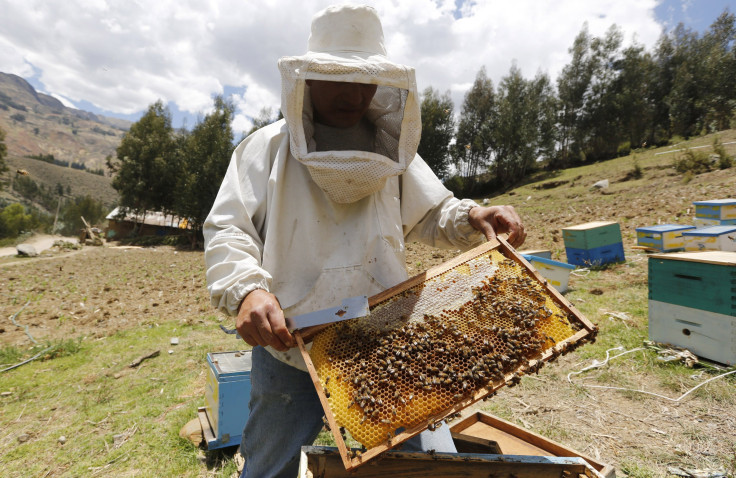Pesticides Killing Wild Bee Populations Necessary For World's Food Supply: Study

Don’t believe everything you read on your pesticide packaging. A new Cornell University study has found that “safe for bees” pesticides may be harming the vital insects after all. In 19 New York state apple orchards, researchers found that increasing pesticide use resulted in smaller and less diverse bee populations. In contrast, natural habitats seem to help keep populations high. The orchards with natural habitats nearby may just attract more bees, though, so a stream of bees would be constantly replacing those dying from pesticides.
Mia Park, a doctoral candidate at the University of North Dakota and one of the authors of the study, said bees and people are a lot more intimate than one might think. “Because production of our most nutritious foods, including many fruits, vegetables and even oils, rely on animal pollination, there is an intimate tie between pollinator and human well-being,” she said.
Declining honeybee populations are a big problem, too. About 30 to 35 percent of the world’s food supply relies on pollination. Over the last decade, bee populations have fallen dramatically, and recent studies of bee populations have shown that their numbers were headed downward during the summer, too. Bee populations were previously only really looked at during the winter, when they are stressed and most vulnerable. Beekeepers say their colonies have declined by 42 percent in the last year, after a 34 percent drop the year before.
Several species of bees are used in the United States for pollination, including wild bees and foreign bees that are shipped in. Wild bees are better at their job in the $30 billion agricultural market they participate in, but a lot of foreign bees have been needed lately.
The declining honey bee populations have been noticed. Recently, the Obama administration has been looking to address the problem, and so has the European Union.
© Copyright IBTimes 2024. All rights reserved.





















